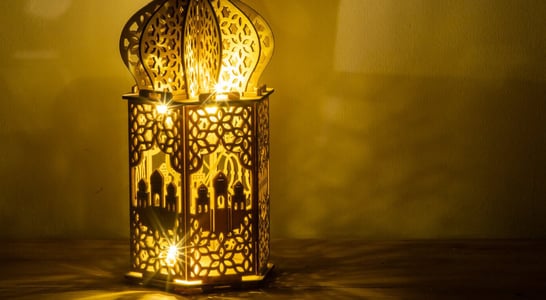
May Day
With flowers blooming and the sun shining, it's the perfect time to dance around the maypole and celebrate springtime!
May Day is a day full of meaning and tradition worldwide. It marks a time to celebrate the changing seasons, with roots in ancient festivals that welcome the start of spring.
People often dance around maypoles, a custom that dates back to medieval times, symbolizing the vitality and fertility of the season. Schools and communities keep this tradition alive, adding a fun and educational aspect to spring festivals.
In modern times, May Day is known for its joyful celebration of life and nature’s renewal!
How to Celebrate May Day
Dance Around the Maypole
Let’s twirl! Grab some ribbons and friends, and find a pole. Dancing around it isn’t just fun; it’s a throwback to times when spring was the biggest news in town. Think of it as a conga line with history; less coordination is needed.
Craft May Baskets
Sneaky gifting, anyone? Create baskets brimming with flowers, candies, or homemade treats. The fun part? Leave them on doorsteps, ring the bell, and run! It’s like ding dong ditch but with more cheer and less chance of getting in trouble.
Plant a Garden
Gardens are magical places where dirt meets dreams. This May Day, why not plant something new? Whether flowers for the bees or veggies for your table, digging in the dirt is a perfect way to celebrate new beginnings.
Host a Spring Feast
Imagine a table under the sun loaded with fresh spring goodies. Invite your pals or family for a feast celebrating the season’s bounty. Think fresh salads, fruit tarts, and anything green. Bonus points for outdoor dining!
Wear a Flower Crown
Channel your inner nature deity with a DIY flower crown. Gather some blooms and get crafting. Not only will you look fabulous, but you’ll also be honoring ancient traditions that celebrate the natural world’s beauty.
By embracing these playful suggestions, anyone can welcome spring with open arms and a dash of whimsy. May Day is the perfect excuse to shake off the winter blues and jump headfirst into the vibrant energy of spring.
Why Celebrate May Day?
The day also holds a special place in the hearts of workers and labor movements across the globe. Known as International Workers’ Day in many countries, this date commemorates workers’ historic struggles and achievements.
It’s a day to remember the fight for fair working conditions and labor rights, inspired by events like the Haymarket Affair in Chicago in 1886. This day reminds us of the ongoing efforts to ensure safety and fairness for workers everywhere.
Celebrating May Day can take many forms, from the simplicity of making May baskets filled with flowers and treats to leave on someone’s doorstep to the unity and togetherness of community gatherings.
Whether it’s through singing, dancing, or participating in workers’ rights events, May Day is a time for people to come together.
It’s a celebration that crosses cultural boundaries, connecting us through shared traditions and the common hope for a brighter, more united future.
History of May Day
The history of May Day is a tapestry woven from various cultural threads, each adding its unique color to the celebrations we see today. This day has deep roots, tracing back to ancient times when people welcomed the arrival of spring with festivities, dances, and floral decorations.
One of the most enduring symbols of May Day is the Maypole. This tradition, dating back to medieval times, involves dancing around a tall pole adorned with streamers and ribbons.
The Maypole dance, originally part of fertility rites, symbolizes the vibrancy and renewal of life. Despite its age, this tradition finds its place in modern celebrations, especially within schools where it’s embraced as a joyful spring activity.
May Day is also synonymous with the labor movement, particularly known as International Workers’ Day in many parts of the world. This aspect of May Day originated in the late 19th century, notably with the Haymarket Affair in Chicago in 1886, a pivotal moment for labor rights.
Workers demanded an eight-hour workday, leading to nationwide strikes and, eventually, to the recognition of May Day as a day to honor the struggles and achievements of workers globally.
Throughout history, May Day has been celebrated with various customs, including gifting May baskets.
This charming tradition involves leaving baskets filled with flowers and treats on neighbors’ doorsteps, symbolizing goodwill and community spirit. Though not as widespread as it once was, some still cherish the practice, keeping the spirit of May Day alive.
May Day embodies the joy of spring’s arrival and workers’ spirit of unity and resilience. Its celebrations, rich in history and meaning, continue to evolve.
The day reflects the changing times while still honoring the traditions that have been passed down through generations.
May Day FAQs
How is May Day connected to the Roman goddess Flora?
In ancient Rome, the goddess Flora was honored during the Floralia festival, which overlapped with May Day.
Flora represented flowers and springtime. Romans celebrated with games, dances, and scattering flower petals to welcome warmer days. This floral emphasis influenced later European May Day traditions.
What unique May Day tradition exists in Cornwall, England?
In Padstow, Cornwall, May Day is celebrated with the “Obby Oss” (Hobby Horse) festival.
Two groups parade through the streets with stylized horse costumes, dancing to drums and accordions. Locals decorate their homes with greenery, symbolizing the transition from winter to summer.
Why is washing your face with May Day dew considered lucky?
In folklore, May Day morning dew was believed to have magical properties.
Washing your face with it could ensure beauty, youth, and good fortune. In some parts of Ireland, people would collect dew from flowers or grass to bottle it for the year.
What unusual way do Bulgarians celebrate May Day?
In Bulgaria, May Day is linked to the feast of Irminden, a traditional festival to ward off snakes and lizards.
People light bonfires, make loud noises, and perform dances to keep evil spirits away. This springtime custom combines pagan beliefs with agricultural traditions.
How did May Day inspire literature and art?
May Day has inspired many works of art and literature over centuries. Geoffrey Chaucer’s The Knight’s Tale references May Day celebrations as romantic and joyful.
In the 19th century, pre-Raphaelite artists frequently painted scenes of May Day dances and floral themes.
What is the Finnish May Day drink, sima?
Sima is a traditional Finnish mead-like drink enjoyed during May Day, or Vappu.
It’s made from water, sugar, lemons, and a hint of yeast, giving it a slightly sparkling texture. It’s often paired with tippaleipä, a funnel cake-style pastry.
What’s the significance of bonfires on May Day in Scotland?
In Scotland, May Day marks Beltane, an ancient Celtic fire festival. Bonfires were lit on hillsides to honor the sun and ensure bountiful crops.
Communities danced around the fires, sometimes jumping over the flames for good luck.
How did May Day lead to political tensions in the U.S.?
In the 1920s, May Day became controversial in the U.S. due to its association with socialist and communist movements.
Fearing subversion, the government promoted “Loyalty Day” as a patriotic alternative. This tension highlights the day’s complex political legacy.
What are May Baskets, and why did people give them?
May Baskets were small baskets of flowers and treats left anonymously at people’s doors.
This 19th-century custom in the U.S. symbolized friendship and goodwill. Today, it’s a rare but charming way to celebrate the holiday.
What myth links May Day with fairies?
Some believe May Day is when the boundary between the human and fairy worlds is thinnest.
In Celtic lore, fairies were said to emerge and roam freely. This belief inspired traditions like hanging protective flowers around homes to ward off mischievous spirits.
Also on ...
View all holidaysNational No Pants Day
Leave your restricting pants in their drawer and feel the freedom of No Pants Day. Try skirts, dresses, kilts, or just stay home and relax bare-legged.
National Space Day
Visit an observatory or use a telescope to explore the night sky, or peruse one of NASA’s livestreams to remind yourself how big the universe really is.
We think you may also like...
Unlucky Day
Sometimes life can feel like a rollercoaster. Embrace the challenges, learn from them, and keep pushing forward towards your goals.








